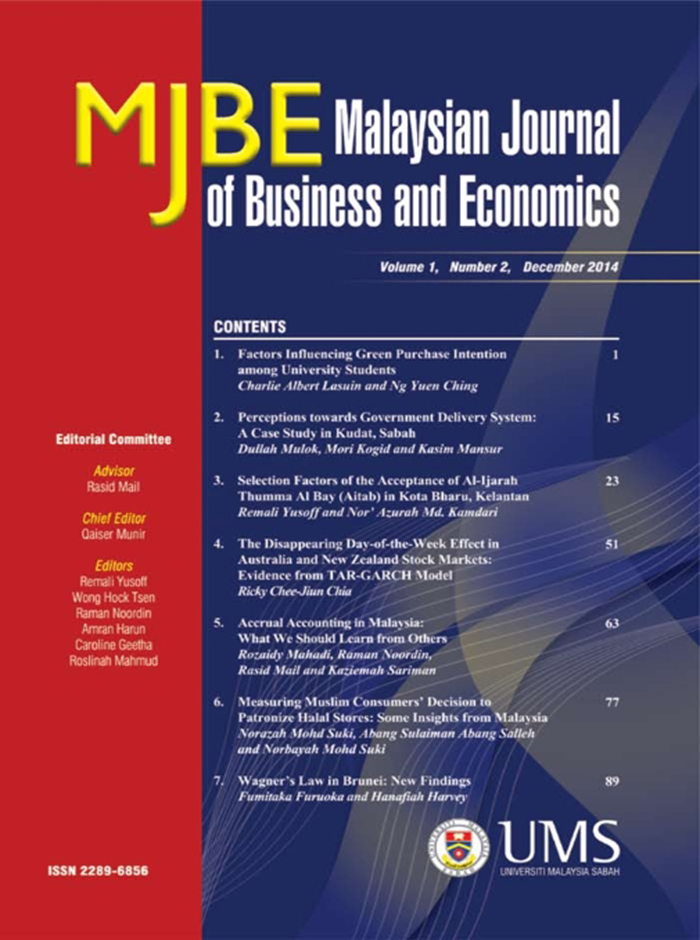Wagner’s Law in Brunei: New Findings
DOI:
https://doi.org/10.51200/mjbe.v1i2.122Keywords:
economic development, government expenditure, Brunei, Wagner’s LawAbstract
Despite numerous research efforts to examine the Wagner’s Law, there is still lacking of systematically analysis on this important topic in Asia. Thus, the current paper aims to fill this research gap and chooses Brunei as a case study to examine the validity of the Wagner’s Law. It is a well-known fact that the Bruneian government has been playing an important role to simulate economic development in the country. It means that Brunei could be interesting example of Asian country where the government expenditure would stimulate economic development. The empirical findings indicate that there is a long-run relationship between economic development, population and government expenditure and there exists a short-run causality between population and government expenditure. These findings seem to empirical evidence to support the Wagner’s Law in Brunei.
Downloads
How to Cite
Issue
Section
License

CCBY (Attribution)
https://creativecommons.org/licenses/by/4.0/
© Universiti Malaysia Sabah 2025
All rights reserved. No part of this publication may be reproduced, distributed, stored in a database or retrieval system, or transmitted, in any form or by any means, electronic, mechanical, graphic, recording or otherwise, without the prior written permission of Universiti Malaysia Sabah Press, except as permitted by Act 332, Malaysian Copyright Act of 1987. Permission of rights is subjected to the journal.









